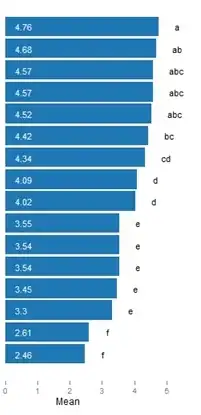General strategy of article deconstruction
A general strategy for learning how to write up results involves finding and deconstructing an example publication. I like to call this article deconstruction. A simple way of doing this involves searching Google Scholar to find a few examples. You may want to limit your search to good journals in your area (e.g., "tukey post hoc social psychology"). Then extract a few writing principles.
Example write up of post-hoc test
Here's one example of a write-up of a post-hoc test from a social psychology context:
The article includes a table of means and standard deviations for each condition for a set of dependent variables.
In the text it has the following:
An analysis of variance (ANOVA) on these scores again yielded
significant variation among conditions, F(2, 37) = 4.29, p < .03. A
post hoc Tukey test showed that the future alone and future belonging
groups differed significantly at p < .05; the misfortune control group
was not significantly different from the other two groups, lying
somewhere in the middle.
--- Baumeister RF, Twenge JM, Nuss CK. (2002). Effects of social exclusion on cognitive processes: anticipated aloneness reduces intelligent thought. Journal of Personality and Social Psychology, 83, 817-27.
Extract writing principles
- Present a table of means and standard deviations
- First report overall ANOVA
- Then report which pairs were significantly different at a given alpha level
- Then report which pairs were not significantly different.
Of course, a post-hoc test could be written up in other ways; for example, you could use a graph of means rather than a table; or you could incorporate post-hoc test results into a table using the $a \le b<c$ style notation ($a,b,c,...$ correspond to groups); but at least by taking a good example, you have a starting point.
